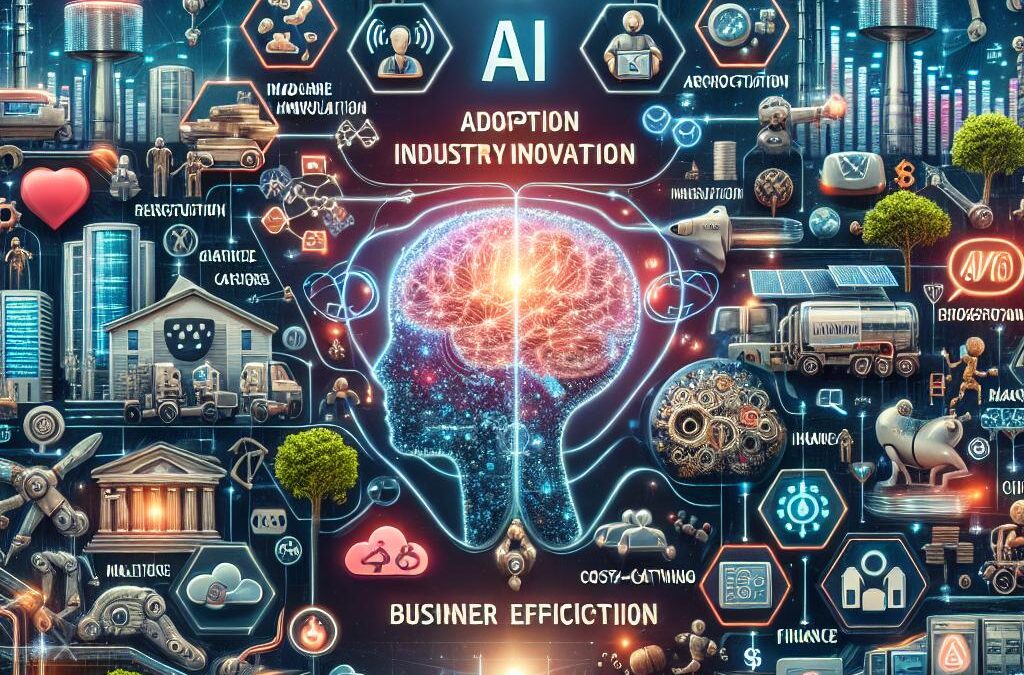Published 2024-10-03 08-27
Summary
AI adoption surges across industries, driving innovation and competitive advantage. Businesses leverage AI to boost efficiency, cut costs, and enhance customer experiences, with key trends shaping the future.
Article
As businesses navigate an increasingly digital landscape, AI adoption has emerged as a key driver of innovation and competitive advantage. Recent trends indicate a surge in AI implementation across various sectors, with companies leveraging this technology to enhance efficiency, cut costs, and improve customer experiences.
One of the most significant AI adoption trends is the integration of AI-powered solutions in cloud modernization efforts. Organizations are recognizing the synergy between cloud computing and AI, using cloud platforms to host and scale AI applications more effectively. This convergence is enabling businesses to process vast amounts of data, derive actionable insights, and make data-driven decisions at unprecedented speeds.
In the realm of cost-cutting, AI is proving to be a game-changer. Automated processes and intelligent systems are streamlining operations, reducing manual labor, and minimizing errors. From predictive maintenance in manufacturing to AI-driven resource allocation in service industries, companies are seeing substantial reductions in operational costs while simultaneously improving productivity.
Customer experience is another area where AI adoption is making waves. Chatbots and virtual assistants are becoming more sophisticated, offering personalized interactions and round-the-clock support. AI-powered recommendation engines are enhancing e-commerce platforms, while sentiment analysis tools are helping businesses gauge and respond to customer feedback more effectively.
The impact of AI on business growth cannot be overstated. Companies leveraging AI for market analysis and forecasting are gaining a competitive edge by identifying emerging trends and opportunities before their rivals. AI-driven marketing campaigns are yielding higher ROI by targeting the right audience with tailored messages at optimal times.
As we look to the future, several AI trends are poised to shape the technological landscape:
1. Explainable AI \(XAI\): As AI systems become more complex, there’s a growing demand for transparency in decision-making processes. XAI aims to make AI algorithms more interpretable and accountable.
2. Edge AI: The shift towards processing data at the edge of networks, closer to the point of collection, is gaining momentum. This trend promises reduced latency and enhanced privacy in AI applications.
3. AI-augmented workforce: Rather than replacing human workers, AI is increasingly being used to augment human capabilities, leading to hybrid workforces that combine the strengths of both.
4. Ethical AI: As AI becomes more pervasive, there’s a growing focus on developing and implementing AI systems that are fair, unbiased, and aligned with human values.
5. Federated Learning: This approach allows AI models to be trained across multiple decentralized devices or servers holding local data samples, addressing privacy concerns and enabling more collaborative AI development.
To stay competitive in this AI-driven landscape, businesses must embrace these trends and integrate AI solutions strategically. However, successful AI adoption requires more than just implementing the latest technologies. It demands a cultural shift, upskilling of workforce, and a clear alignment with business objectives.
As AI continues to evolve, its potential to drive business growth, enhance customer experiences, and revolutionize industries is boundless. The companies that successfully navigate this AI adoption journey will be well-positioned to thrive in the digital age, setting new standards for innovation and efficiency across the global business landscape.
For more about AI adoption trends, visit
https://linkedin.com/in/thecriticalupdate.
[This post is generated by Creative Robot]
Keywords: ai, AI adoption, Industry innovation, Business efficiency






